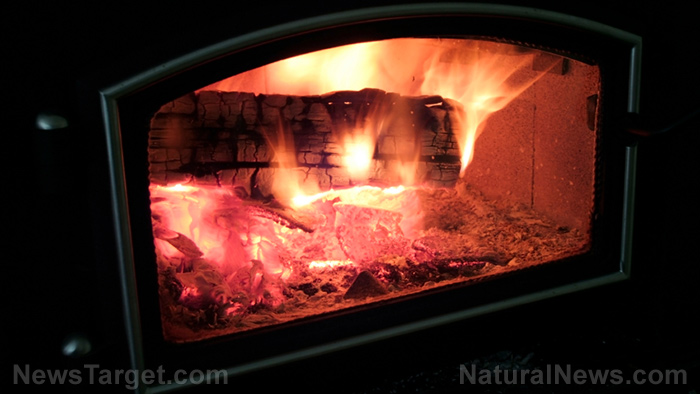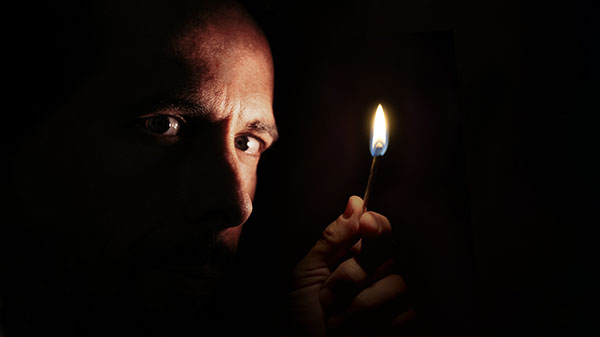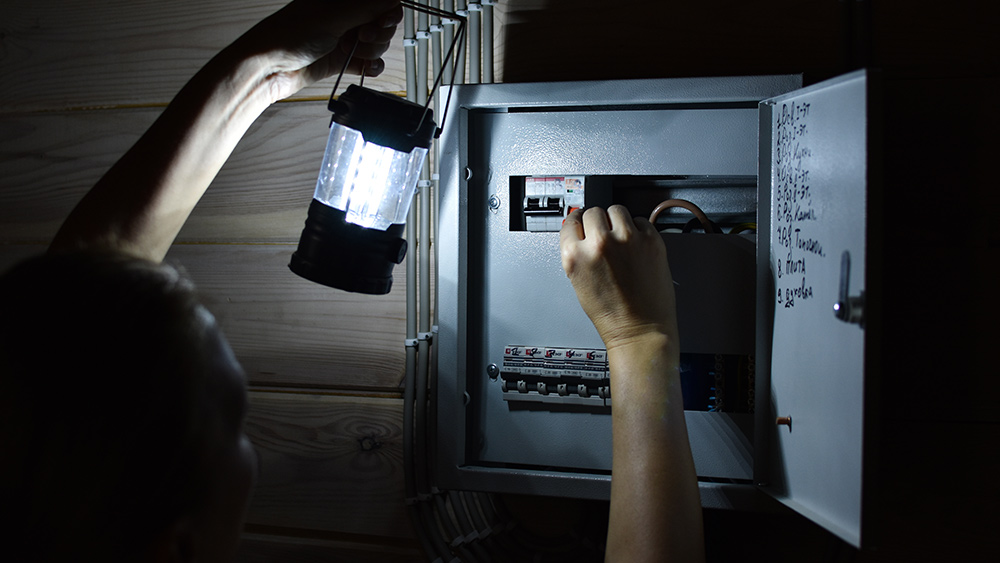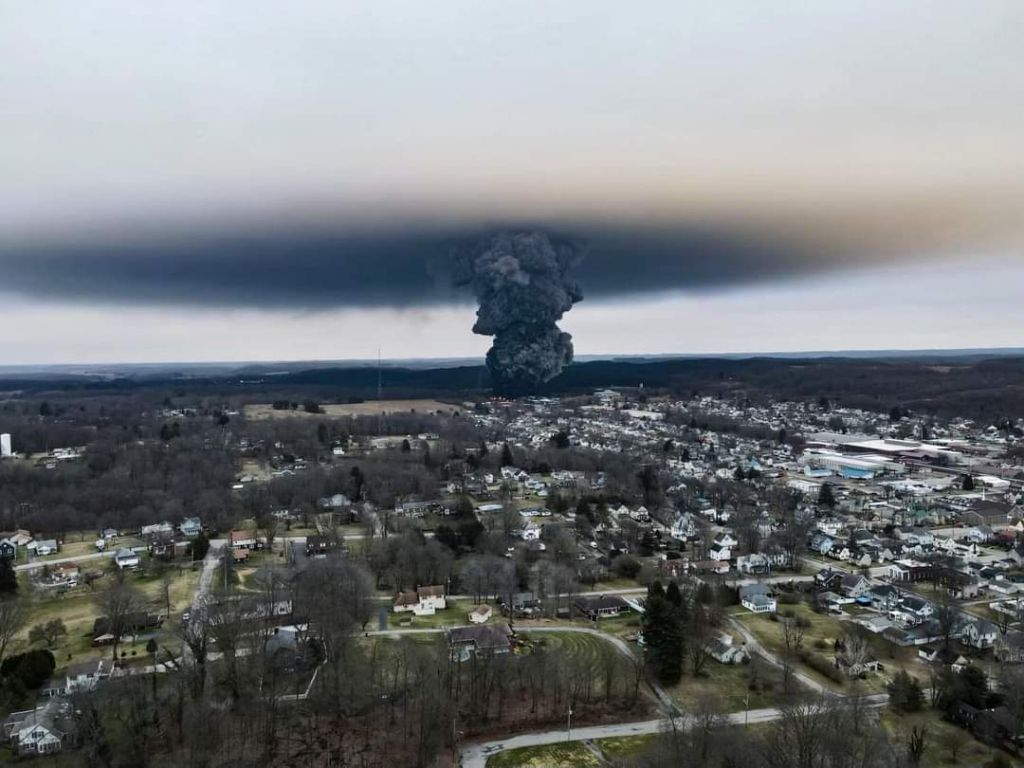
If you're worried about how you're going to keep your family warm during a power outage, invest in a wood-burning stove or get a kerosene heater and stock up on fuel before SHTF. (h/t to SurvivalCache.com)
The survival "Rule of Threes"
Beginner preppers often start their prepping journey by learning about the "Rule of Threes."
According to the Rule of Threes, you can survive:
- Three minutes without air
- Three hours without shelter
- Three days without water
- Three weeks without food
The timeframes for these rules are not absolute, but if you're confused, the order of the rules will help you prioritize your needs. The version of the rule above is more about temperature regulation than shelter.
When SHTF, remember that you can only survive for three hours "without maintaining core body temperature." Lengthy exposure to the cold will eventually use up your body’s stored energy, which can cause your body temperature to rapidly decrease, leading to hypothermia.
Signs and symptoms of hypothermia include:
- Clumsiness or lack of coordination
- Confusion or memory loss
- Drowsiness or very low energy
- Loss of consciousness
- Shivering
- Slow, shallow breathing
- Slurred speech or mumbling
- Weak pulse
Safety tips when using alternative heat sources
Before you start deciding which alternative method to use to stay warm during a power outage, follow the tips below to avoid accidents when SHTF.
Avoid sweating
If possible, avoid hard physical labor that can make you sweat in cold weather. This is dangerous because sweating in cold conditions may be deadly.
Carbon monoxide poisoning
Carbon monoxide (CO) poisoning occurs when you burn biomass and fuels without proper ventilation. Exposure to CO can cause unconsciousness and even death.
Make sure you only burn fuel or gas in a well-ventilated area or room to prevent CO poisoning. You should also have battery-operated carbon monoxide detectors in your home that are functioning properly.
Fire safety
When using certain heat sources, there may be a risk for an uncontrolled fire to break out. Always prioritize fire safety when using a heat source like space heaters or a non-electric heater.
This means:
- Making sure the heat source can't fall over.
- Keeping all flammable materials away from the heat.
- Knowing where you store fuel in relation to the heater.
- Having several methods for extinguishing an uncontrolled fire, like fire extinguishers.
Make sure rooms are properly ventilated
Make sure the area is well-ventilated when sheltering in closed spaces.
Even in cold weather, you can't completely seal yourself off because you need a source of fresh air. If you're closing the hatch when the temperatures drop, leave a window cracked open.
Alternative heat sources to use during a power outage
Before SHTF, consider some of the options detailed below so you can stay warm even when there's a power outage.
Alcohol heater
An alcohol heater is usually small and lightweight, and can burn different fuels, making it a great emergency heating source. Additionally, alcohol is a relatively cheap and available fuel that you can buy from most big box stores or hardware stores.
You can use different types of alcohol with this kind of stove, but it's best to use denatured alcohol because it burns the cleanest, making it safer to use indoors. Be careful with an alcohol stove since it produces flames that are nearly invisible.
Body heat
This emergency heat source has two variations.
- Using the body heat of other people is an effective way to stay warm. The best way to do this is to have your family get as close as possible and cover yourselves with an insulating layer like a blanket in one room.
- You can also use the body heat of animals when SHTF. Certain animals, like dogs, have an internal temperature that runs a little higher than humans. This means humans generally have a temperature of 98.6 F while a dog's normal temperature can be several degrees above that. If the power goes out and you feel cold, cuddle with your pet dog or other friendly domesticated animals to stay warm.
Clothing
Wearing weather-appropriate clothing is crucial because your body is your primary source of heat. If the weather is cold, avoid wearing cotton. Once cotton gets wet, it loses its insulating ability.
Choose wool, which can be a bit expensive but is very durable. Even if wool clothing gets wet, its ability to insulate remains very high.
Wear wool socks to stay warm and put on a pair of gloves, a scarf and a hat. Covering these body parts will help prevent heat loss.
Wear several layers. You can peel off layers if it starts to feel warm.
Exercise
When SHTF and you lose all access to any kind of heat source, you can still stay warm with exercise since it is a great way to increase your body temperature.
While sweating in cold temperatures should be avoided, there is a trick to exercising to stay warm. Don't exert yourself for long periods like you would during a normal exercise session since this will make you sweat.
Instead, work large muscle groups slowly, take a break, then repeat the process. Squats and pushups are good options because they target large muscle groups.
Electric heaters
Electric space heaters use electricity to heat internal coils, which provides radiant heat. Note that if you want to use electric space heaters, you also need a backup power supply.
This device requires a lot of energy to operate, so you need something more powerful than small-scale solar and wind systems. Get small or whole-home generators instead.
Fireplace
Many homes have a fireplace that is perfect for staying warm even without electricity. But most fireplaces aren't efficient because most of the heat goes up and out the chimney flue.
If you don't have another option, use a fireplace to stay warm.
Hand warmers
Hand warmers are a quick and easy way to keep parts of your body warm.
There are two different kinds of hand warmers: non-electric and electric.
Non-electric heaters come in a packet and consist of a chemical mixture that generates heat when activated. These types of hand warmers are cheap and you can easily find them at sporting goods stores, big box stores or hardware stores.
Electric heaters are little devices that can be used to charge other devices or as a hand warmer. If you don’t have electricity, you will need an alternative power source to charge it, like a generator or solar panels.
Kerosene heater
A kerosene heater needs kerosene as a liquid fuel. When ignited, kerosene produces an open flame enclosed within the frame of the heater.
Due to the nature of the fuel being used and the open flame, some kerosene heaters have an accidental tip over shutoff mechanism. This safety feature will extinguish the flame if the heater becomes unstable to prevent an uncontrolled fire. (Related: Survival tips: How to live without electricity like the Amish.)
Outdoor fire
Outdoor fires can help a large group stay warm, but the downside is a lot of the warm air from the fire itself is lost to the surrounding area.
To create a better heating system, set up a heat reflector around the fire by building a small wooden fence. This will help radiate some of the heat back to you.
Pellet stoves
Pellet stoves are similar to wood stoves, but the former are usually smaller and can be more expensive. But pellet stoves burn quite clean, work efficiently and generate a lot of heat.
Instead of firewood, you only need recycled sawdust and wood compressed into small pellets.
Propane heater
A propane heater can provide heat during an outage and they are portable like a traditional space heater. Propane heaters typically use small bottles of propane that attach right to the heater.
Rocket mass heater
A rocket mass heater is a type of rocket stove that operates similarly to a rocket stove but on a larger scale. Pair a rocket mass heater with a ventilation system for a very effective indoor heater.
Tea candles
Even small candles are effective at warming small spaces if you don't have other heat sources.
While you can use several tea candles to keep an average-sized room warm, you shouldn't use this method if you are going to sleep. It's much safer to heat a room with candles using several clay pots.
Wood-burning stove
Unlike a fireplace, where most of the heat is lost through the chimney, wood-burning stoves contain the entire fire, allowing them to retain heat in the room more effectively.
If it has a flat surface on top, you can also use a wood-burning stove for cooking food or boiling water. However, a wood-burning stove will also require firewood.
Before disaster strikes during winter, choose a method that doesn’t rely on the grid so you can keep your family warm even during a power outage. Always exercise caution when using heating devices with open flames.
Watch the video below for tips on how to charge solar batteries using a generator.
This video is from the Solar Surge channel on Brighteon.com.
More related stories:
Survival essentials: 9 Stealthy ways to cook after SHTF.
Prepper must-haves: What to stock up on before a summer or winter power outage.
Emergency preparedness: 10 Ways to heat your home after SHTF.
Sources include:
Please contact us for more information.























